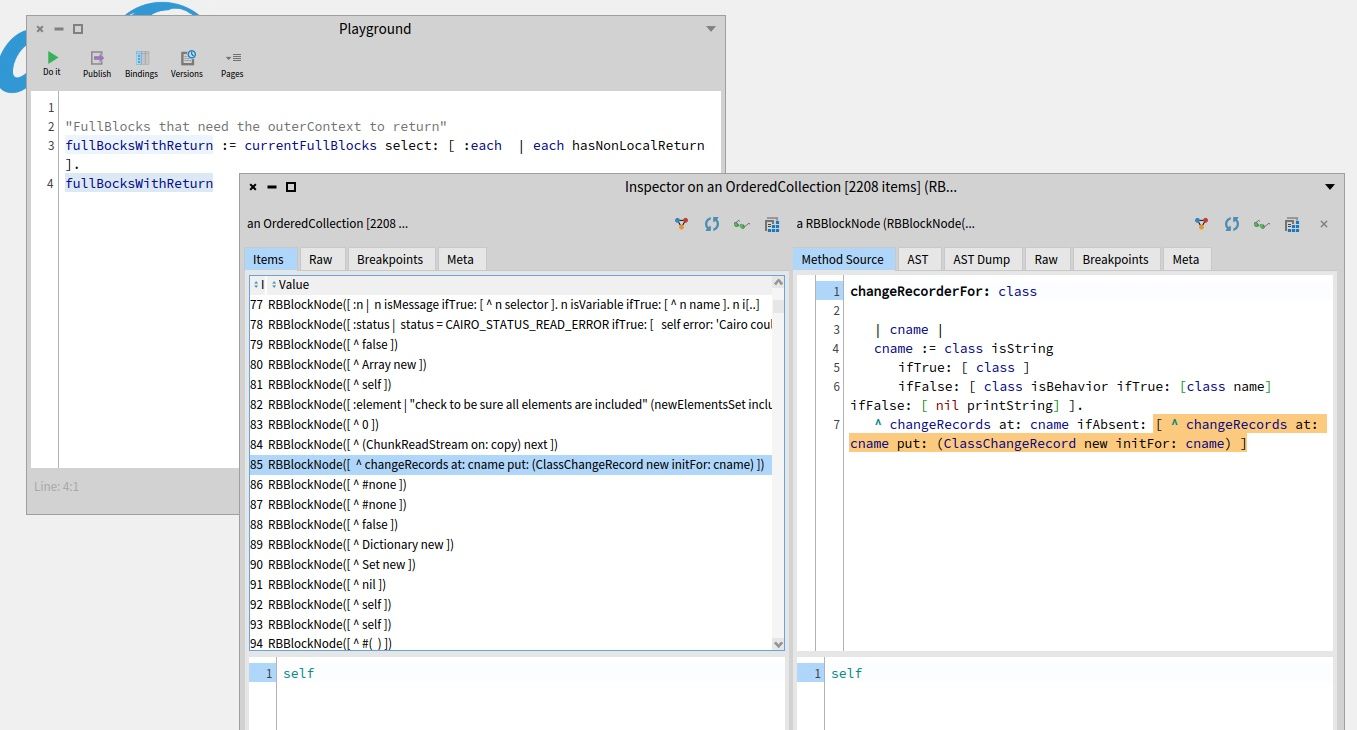How do we use Blocks? Some Numbers
Blocks are used a lot in any Smalltalk system. Let’s analyse (statically) how we use blocks in Pharo. I use the current Pharo11 development version, so the exact numbers will of course be different tomorrow.
There are quite a lot of methods, but this includes tests, test data and all the things we encode as methods but maybe should not:
Smalltalk globals methods size "121357"To get all blocks, we ask for all methods and then the blockNodes of the AST:
allBlocks := Smalltalk globals methods flatCollect: [:method | method ast blockNodes ].
allBlocks size "86028". This kind of shows that most methods are quite simple, we have more methods than blocks. And of these, a lot are actually used as arguments of messages that implement control structures (like #ifTrue:). These are actually statically inlined, we never create a BlockClosure for these:
"but many are compiled inline (eg ifTrue:)"
currentFullBlocks := allBlocks select: [:blockNode | blockNode isInlined not].
currentFullBlocks size. "36407"How many of these blocks actually are clean? Clean blocks are those that do not
- access self/super
- have a non-local return
- access instance variables
- access temporary variables from an outer block or method
These blocks could be created at compile time, not runtime. To check this, we have #isClean on the RBBlockNode:
cleanBlocks := currentFullBlocks select: [:blockNode | blockNode isClean].
cleanBlocks size. "10097" A lot of these clean blocks are actually just returning a constant, e.g. the empty block [] evaluates to nil. #isConstant checks this:
"the clean blocks are actually just constant"
constantBlocks := cleanBlocks select: [:blockNode | blockNode isConstant].
constantBlocks size. "2540" Of all the not optimized blocks, how many actually have a non-local return? If a block does not have a non-local return, we could create it at runtime, but without an outerContext.
"FullBlocks that need the outerContext to return"
fullBocksWithReturn := currentFullBlocks select: [ :blockNode | blockNode hasNonLocalReturn ].
fullBocksWithReturn size "2198"There are not that many! And some of the code could be rewritten (e.g. to move the return out of the block). Let’s look at them, inspect fullBocksWithReturn:

The inspector can shows for the blocknode the method source, with the block hightlighted.
The method #changeRecorderFor: is a typical example for a block that does non-local return which is not needed: as the result of the whole #at:ifAbsent: is returned, we can just remove the non-local return.
Posted on December 6, 2022 #Pharo #Blocks #AST